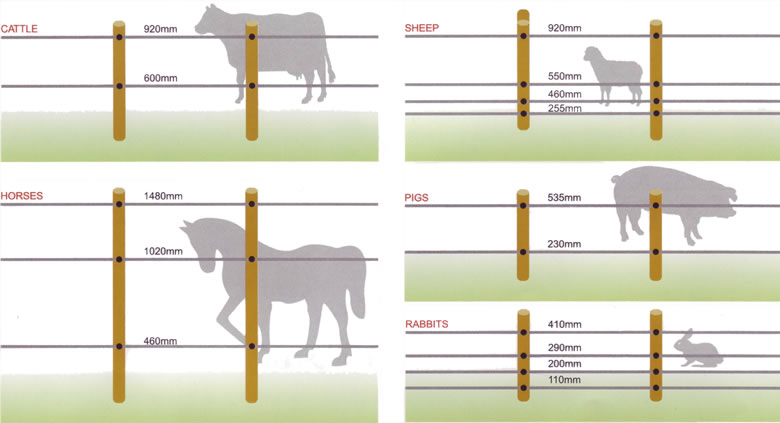|
> Payment & Delivery Information > Electric Fencing Guidelines
1. Ordering Process: You can order online using the basket system,
by telephone on 01347 822368 or through the post. 2. Payment Process: You can pay online using the basket system with paypal or your credit/debit card. Please note this system is secure and does not require a paypal account. Other methods of payment include Postal Orders or Cheque via the post (Please note that cheques will be allowed to clear before goods are despatched which usually takes 7 days). Cheques/Postal Orders should be made out to M.E.Willis Ltd and mailed to: M.E.Willis Ltd, 38 Long Street, Easingwold, York, North Yorkshire, YO61 3HT. Alternatively you can contact us by telephone with your order and credit/debit card details for payment. 3. Delivery Information: Delivery cost to Mainland England, Scotland and
Wales is £6.95 per order. Or £3.95 for orders of up to two smaller items (Unless otherwise stated).
Delivery cost to Northern Ireland and UK isles is £12.95 per order. Or £3.95 for orders of up to two smaller items (Unless otherwise stated).
Standard delivery time is 2-5 working days. When we deliver the goods to you, our carriers
will require you or someone on your behalf to sign for the parcels.
If, for any reason, there is a problem with delivery; ie shortage or
damage you must contact us within 48 hours of the parcel arriving with
you. All deliveries sent by us are insured until signed for as in good
condition by the recipient. In the unlikely event, claims for damages
caused by the carriers can only be made if the parcel is signed for
'unchecked' and any damages reported to us within the 48 hours stated. 4. Returns Policy: If you are not totally satisfied with your purchase or you have simply changed your mind about your purchase then in line with the Distance Selling Regulations, you can return your item provided you inform us of this decision via letter or e-mail to customer services within 7 working days of receipt. Once you have informed us of your decision to return goods under the Distance Selling Regulations, you have 7 working days to return the item(s) at your own expense. you will be responsible for the safe return of the goods. The goods must not be opened nor used and must be 'as new' when returned to us. All items must be complete with original packaging, manuals, peripherals etc as originally supplied. Manufacturer packaging must not be defaced in any manner. Once goods are received at M.E.Willis Ltd, we will issue a refund for the cost of the goods to your original payment method. 1. Battery Powered Units • Ensure that the energiser is switched OFF before connecting to the battery. The LED Indicator will flash at approximately one pulse per second, indicating that the energiser is working correctly. If the unit is fitted with a 'low battery' indicator, the LED will go red to indicate that the battery needs recharging. 2. Mains Powered Units • These units are designed to be fitted INDOORS ONLY. The red light on the right hand side of the control box will indicate that there is power entering the energiser. The red neon to the left will pulse at approximately one pulse per second, indicating the energizer is working correctly. An 'earth leakage monitor' (if fitted) will indicate the fence line condition. This is particularly useful in areas of high vegetation growth. 3. Radio Interference All Hotline fencers comply with the relevant Electro Magnetic Compatibility
regulations (EN50082-1, EN55014, EN581-1). • A really good earth system is paramount - the fencer must not be connected
to water or gas pipes, or the mains electricity earth. Use double insulated
lead-out cable to your earth system. To find faulty joints, leaks or shorts: 4. Installation of an Earth/Ground stake The earthing system is an integral part of your fencers' performance. • All fencers must have a return path through the ground via the earth
stake hack to the fencer in order to complete the circuit loop. Remember that
all electrical circuits must form a complete loop from the positive (live) to
the negative (earth) terminals of the supply circuit. In terms of electric fencing
this means that the ground (earth) is just as much part of the circuit as the
fence line and the animal is the missing link that completes the loop. 5. Earthing Guidelines In the majority of cases the ground return system to the earth stake is most
effective, but under very dry conditions and with very long permanent fences,
it might be necessary to use a live/earth system. In other words the wires of
the fence system are either positive or negative. So when the animal touches
the fence it will touch both a positive and a negative wire, thus completing
the circuit and therefore it will receive a shock. 6. Fence Heights Below is a selection of fence heights for permanent systems for certain animals. Heights can of course vary depending on personal preference, and if in doubt it is always better to add an extra higher line.  7. Warning • Avoid contacting electric fence wires, especially with the head, neck
or torso. |


